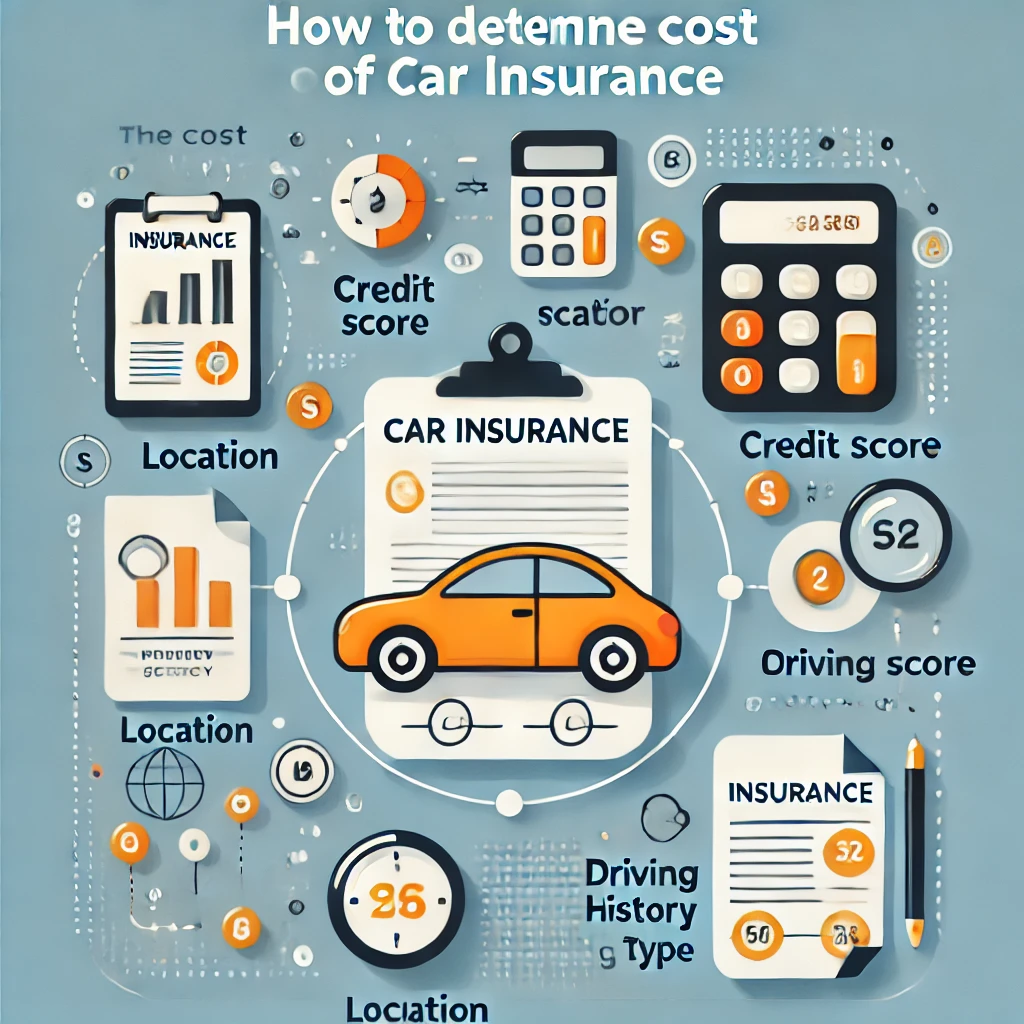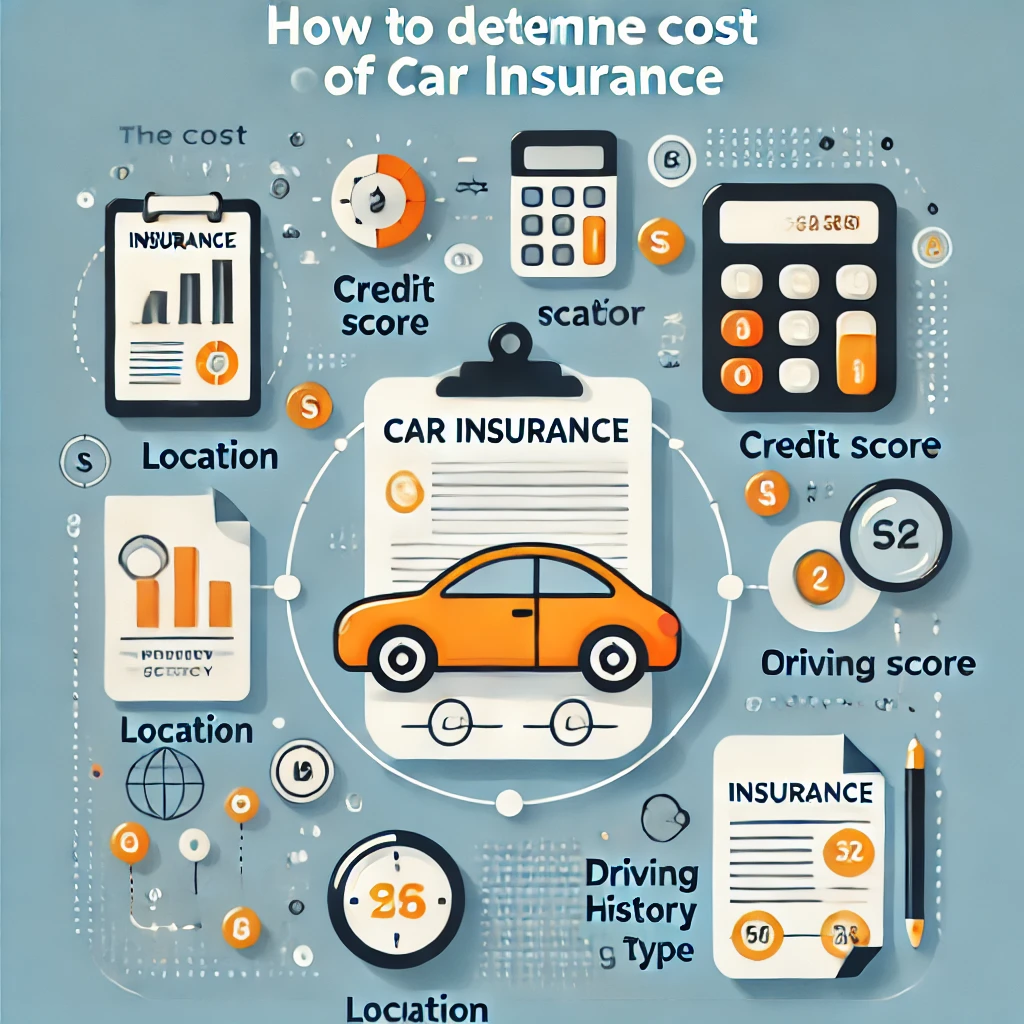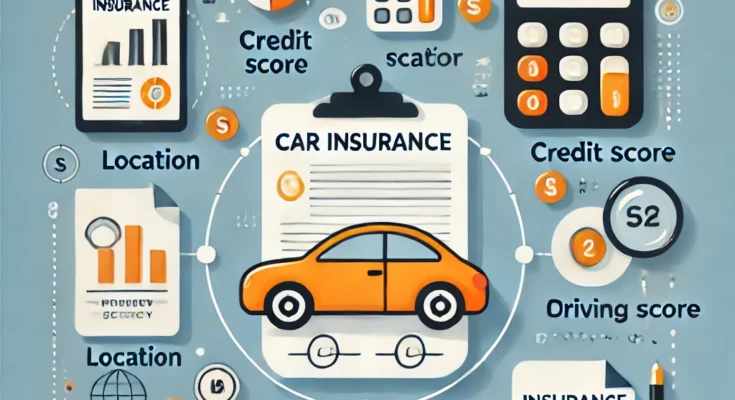Car insurance is a crucial aspect of owning a vehicle, but understanding how much it costs can sometimes be confusing. Many factors can affect the price of insurance, so it’s important to know what influences it to find the right coverage at the best price. In this article, we’ll detail everything you need to know about car insurance costs and how to get the best deal.
What Is the Average Cost of Car Insurance?

Car insurance costs vary widely depending on several factors, but understanding the averages can help you plan your budget effectively. In this guide, we’ll explore the typical costs of car insurance, the factors that affect these rates, and how you can ensure you’re paying a fair price.
The National Average
The average cost of car insurance in the United States is approximately $1,200 per year for full coverage. However, this figure represents a general estimate, and individual costs may differ based on location, age, and coverage needs. For those seeking basic liability coverage, the cost may be as low as $400 annually, while comprehensive policies in high-risk areas can exceed $2,500 per year.
Breaking Down the Costs
To better understand these averages, it’s important to consider the components of car insurance:
- Liability Insurance
- Covers damages or injuries caused to others. Typically the cheapest option, starting at $400 per year.
- Collision Insurance
- Covers damages to your car from accidents. Adds an additional $300 to $700 annually on average.
- Comprehensive Insurance
- Covers non-collision incidents like theft or natural disasters. Adds $200 to $500 annually.
- Uninsured/Underinsured Motorist Coverage
- Protects you in accidents with drivers who lack sufficient insurance. Costs an extra $100 to $300 per year.
- Personal Injury Protection (PIP)
- Covers medical expenses for you and your passengers. Costs vary widely, ranging from $50 to $500 annually.
Factors Influencing the Average Cost of Car Insurance
Location
Urban areas often have higher premiums due to traffic congestion and higher theft rates. Meanwhile, rural areas generally enjoy lower rates because of reduced traffic and crime levels.
Age and Gender
Young drivers, especially teenagers, face the highest insurance premiums due to their lack of driving experience and higher risk profiles. Drivers in their 40s and 50s, on the other hand, typically enjoy the lowest rates. Gender also plays a role, with male drivers often paying more than females.
Driving Record
A clean driving record is one of the most effective ways to keep insurance premiums low. Any traffic violations, accidents, or DUI convictions can significantly increase costs, as insurers view these as indicators of risk.
Credit Score
In many states, credit scores are used as a risk assessment tool. Drivers with higher credit scores generally pay less for insurance, while those with lower scores may face higher premiums.
Vehicle Type
The make and model of your car play a crucial role in determining insurance costs. Luxury vehicles, sports cars, and vehicles with high repair costs or theft rates tend to be more expensive to insure compared to standard sedans or compact cars.
Coverage Level
The level of coverage you choose has a direct impact on your premium. Opting for higher coverage limits and lower deductibles can provide more financial protection but will result in higher premiums. Conversely, selecting basic coverage with higher deductibles can save money upfront but may leave you vulnerable in case of a claim.
Tips to Reduce Your Car Insurance Costs
- Shop Around: Compare quotes from multiple insurers to find the best rate.
- Consider Discounts: Many companies offer discounts for bundling policies, being a safe driver, or maintaining good grades (for students).
- Opt for a Higher Deductible: This lowers your premium but increases your out-of-pocket costs in the event of a claim.
- Maintain a Good Credit Score: Improving your credit can reduce your premiums in most states.
- Drive Safely: Avoid accidents and traffic violations to qualify for safe driver discounts.
What Influences Car Insurance Rates?

Car insurance rates are determined by a variety of factors that insurance companies use to assess risk and calculate premiums. Understanding these factors can help you make informed decisions and potentially lower your costs. In this guide, we’ll explore the main elements that influence car insurance rates.
Key Factors That Influence Car Insurance Rates
1. Your Driving Record
Your driving history is one of the most significant factors influencing your insurance premiums. A clean record with no accidents or violations demonstrates responsible driving and usually results in lower rates. However, traffic violations, accidents, or DUI convictions can lead to significantly higher premiums.
2. Age and Gender
- Age: Young drivers, especially teenagers, often face the highest insurance rates due to their lack of experience and higher risk of accidents. Rates tend to decrease with age, particularly after reaching your mid-20s, and remain lower until you’re around 65 years old.
- Gender: In some cases, gender also plays a role. For example, male drivers under 25 typically pay more than their female counterparts because they are statistically more likely to be involved in accidents.
3. Location
Where you live affects your car insurance rates significantly. Urban areas usually have higher premiums due to increased traffic density, higher accident rates, and more instances of vehicle theft. Rural areas, on the other hand, tend to have lower rates.
4. Type of Vehicle
The make and model of your car greatly influence insurance costs. Vehicles that are more expensive to repair or replace, such as luxury cars, have higher premiums. Cars with high safety ratings and lower theft rates are generally cheaper to insure.
5. Coverage Levels
The type and level of coverage you choose directly impact your premium. Basic liability insurance is the most affordable, but adding collision, comprehensive, or higher coverage limits increases the cost.
6. Deductible Amount
A higher deductible reduces your monthly premium but increases your out-of-pocket costs in the event of a claim. Conversely, a lower deductible raises your premium but minimizes upfront expenses when filing a claim.
7. Credit Score
In many states, your credit score can affect your car insurance rates. Insurers view individuals with higher credit scores as more reliable and less likely to file claims, leading to lower premiums. A lower credit score may result in higher rates.
8. Annual Mileage
The more you drive, the higher your risk of being involved in an accident. Drivers with lower annual mileage often qualify for discounts because they spend less time on the road, reducing the likelihood of accidents.
9. Marital Status
Married individuals generally pay lower car insurance rates than single drivers. Insurers consider married drivers to be less risky, as they are statistically less likely to be involved in accidents.
10. Insurance History
A lapse in coverage or a history of frequently switching insurers can increase your rates. Maintaining continuous coverage demonstrates reliability and can help keep premiums low.
How to Find Affordable Car Insurance

Finding affordable car insurance is a priority for many drivers, but it can feel overwhelming with so many options and factors to consider. Fortunately, there are practical steps you can take to reduce your premiums without sacrificing necessary coverage. This guide will help you discover effective strategies to find affordable car insurance that fits your budget.
Key Strategies to Find Affordable Car Insurance
1. Compare Quotes from Multiple Insurers
Not all insurance companies offer the same rates for the same coverage. Use online comparison tools or work with an independent agent to get quotes from multiple providers. Comparing rates allows you to identify the best deal tailored to your needs.
2. Opt for Higher Deductibles
A higher deductible can significantly lower your monthly premium. While this means you’ll pay more out-of-pocket in the event of a claim, it can be a smart choice if you’re a safe driver and rarely file claims.
3. Bundle Insurance Policies
Many insurance companies offer discounts if you combine multiple policies, such as car and home insurance. Bundling can save you money while simplifying your coverage.
4. Take Advantage of Discounts
Ask insurers about available discounts. Common discounts include:
- Safe driver discounts
- Good student discounts
- Low-mileage discounts
- Military or veteran discounts
- Multi-vehicle discounts
5. Maintain a Good Credit Score
In many states, your credit score impacts your car insurance rates. A higher credit score can lower your premiums, so take steps to improve your credit by paying bills on time and reducing debt.
6. Drive Safely
A clean driving record is one of the best ways to keep your insurance costs low. Avoid accidents, traffic violations, and DUI convictions to qualify for safe driver discounts.
7. Choose a Car That’s Cheaper to Insure
The make and model of your car affect your insurance premiums. Vehicles with high safety ratings and lower theft rates are generally more affordable to insure. Before purchasing a car, check its insurance costs.
8. Reduce Unnecessary Coverage
If you have an older car, consider dropping comprehensive and collision coverage if the value of the car doesn’t justify the additional cost. Be sure to evaluate your risk before making changes.
9. Ask About Usage-Based Insurance
Some insurers offer usage-based or pay-as-you-go insurance programs. These programs track your driving habits and mileage, rewarding safe and low-mileage drivers with lower premiums.
10. Review Your Policy Annually
Insurance rates and your circumstances change over time. Regularly reviewing your policy ensures you’re not overpaying and that you’re taking advantage of the best rates available.
conclusion
Determining the cost of car insurance involves assessing your unique situation and understanding the factors that influence rates. Start by gathering quotes from multiple providers, ensuring the coverage levels are consistent across quotes. Evaluate your personal factors such as driving history, location, vehicle type, and credit score to understand how they impact your premiums.
To get an accurate estimate, use online tools or consult with an insurance agent who can help tailor policies to your needs. Always review your coverage periodically to ensure you’re getting the best value for your money. Remember, finding the balance between affordability and adequate coverage is key to making informed decisions about car insurance


